Day 13 - Da Ting goes Woosh, I guess
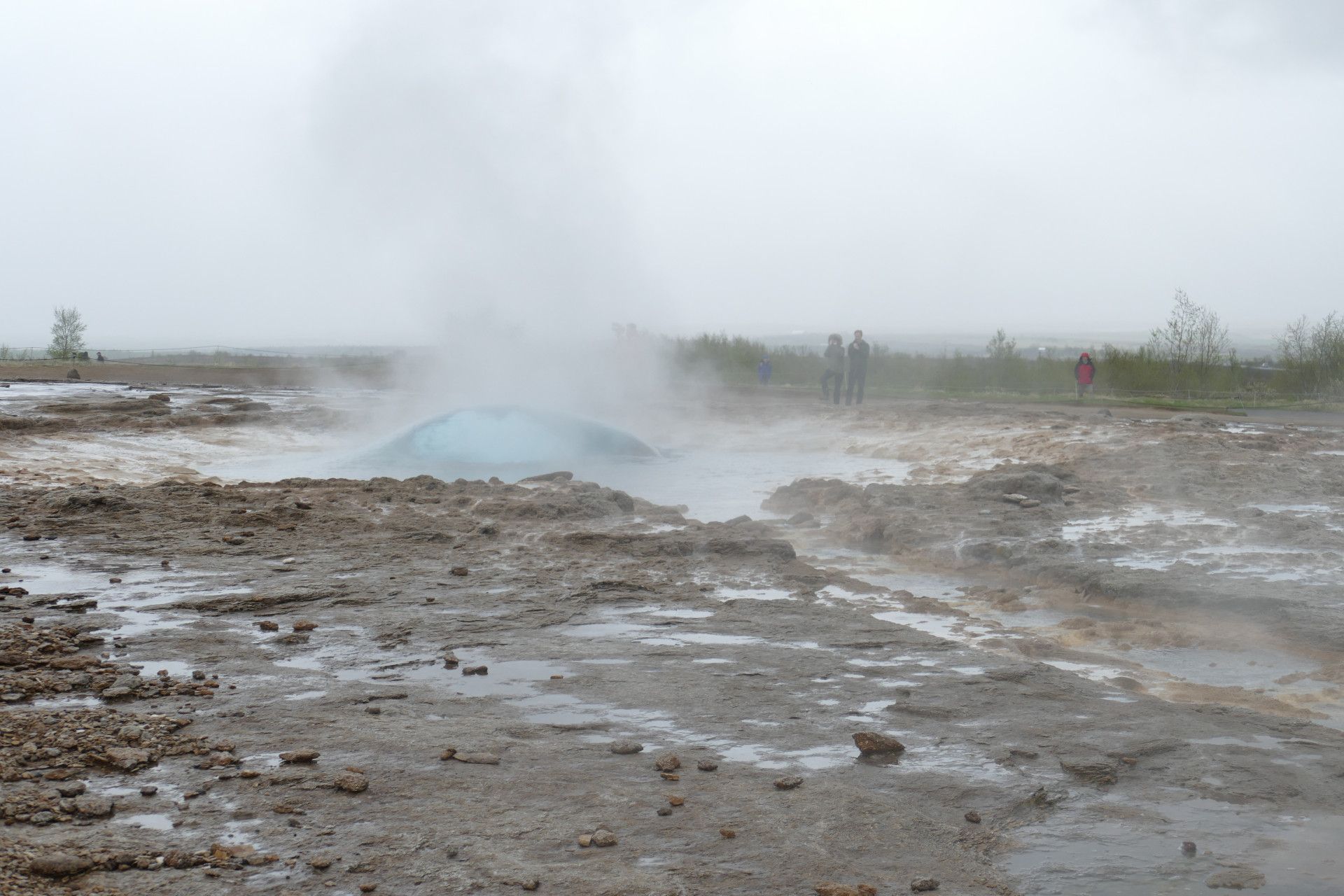
New day new locations to see and this day got started by a trip to Icelands most important place, historically and culturally with a bit of geology to add to the mix (although that last part holds true for most of this country).
The place in question is Þingvellir national park(that funny letter at the beginning of the word is the equivalent to the English th), the site where Icelands parliament (Alþingi) was founded and held its meetings until 1800. Parliament sessions were held once per year in summer and lasted for two weeks. During this time, laws were debated and passed, cirminal and civli trials were held and disputes were settled. There also was a form of parliamentary immunity in place during the sessions, as it was forbidden to carry out any feudes or vendettas against any participants.
Geology comes into play as this site is located on an old fault line where the American and the Eurasian tectonic plates are pushed apart (at 2 cm per year, as various tour guides and exhibition videos have stated unanimously).
The most striking fact about Alþingi is that it lays claim to being the oldest parliament that still exists (although not continually in session, as it was dissolved between 1800 and 1844, 1844 and onwards the seat of parliament was moved to Reykjavik).
Although this place is full of history and of immeasurable cultural importance to the people of Iceland, it's hard to select interesting pictures, as it's a field with a river running through, so I stick with the description.
From Þingvellir it's only a short hop to my next destination of the day, Geysir. Not any geyser (the english word is derived from this one) but the Geysir (written with capital G because it's the name) the first bubbling water hole that shoots steam and hot water in the air, discovered and documented by Europeans (it's known since the 14th century).
Geysir itself is only rarely active (if it is, the resulting eruption shoots water and steam 70 meters into the air) but it has a smaller sibling, just around the corner named Strokkur that is a bit more lively. Eruptions happen every 6-10 minutes and the water shoots up into the air to a height of 15-30 meters.
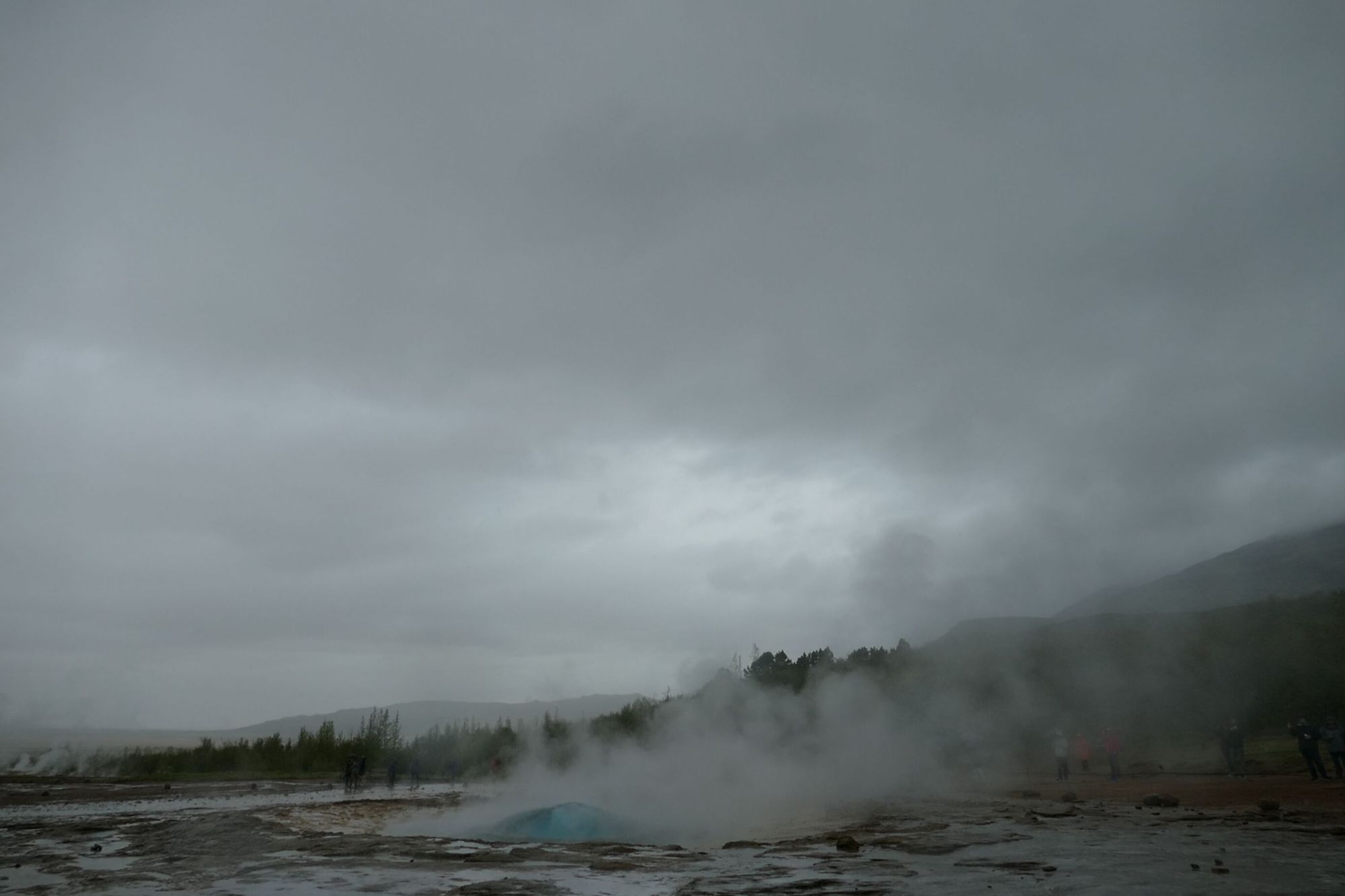
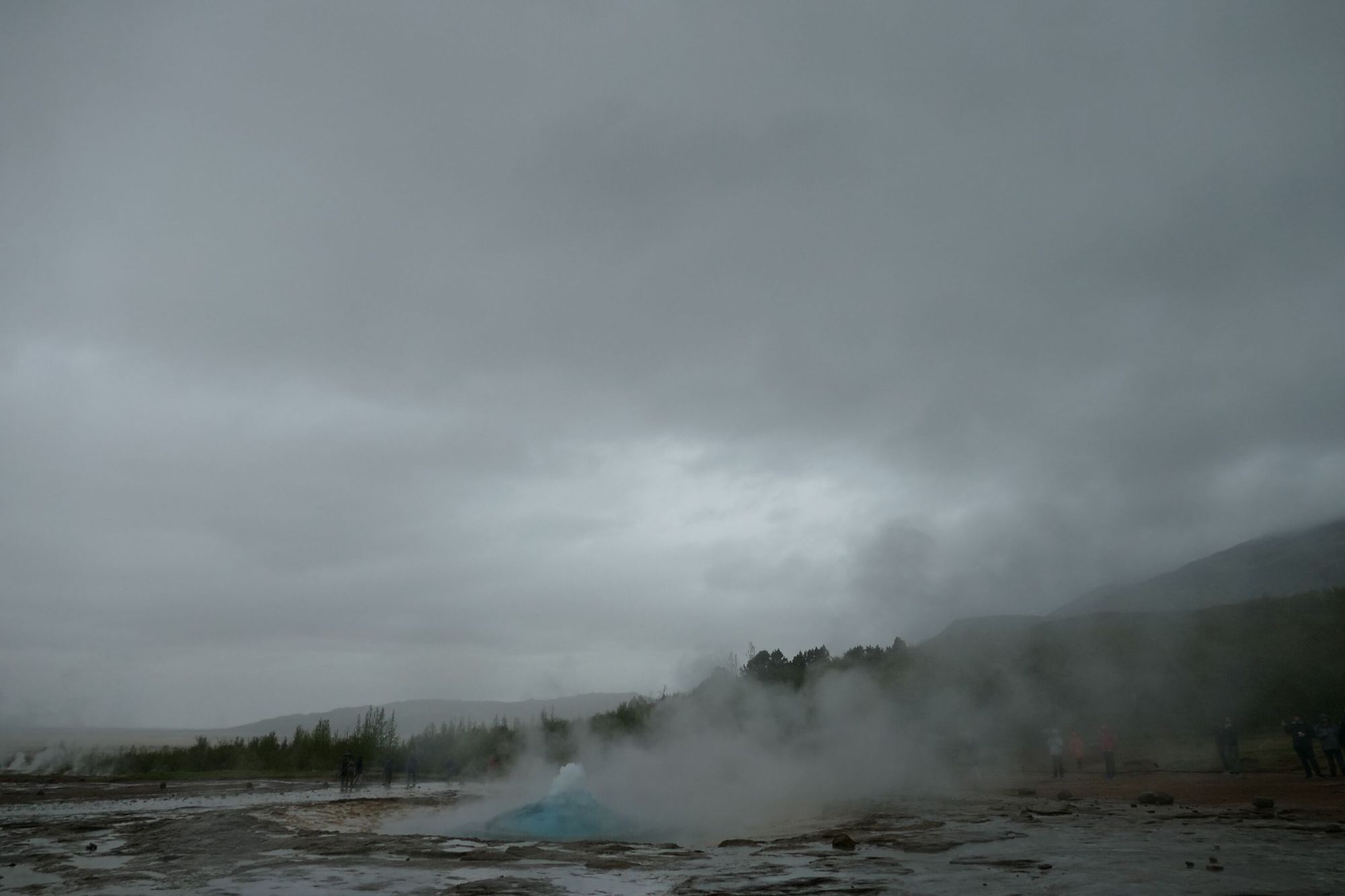
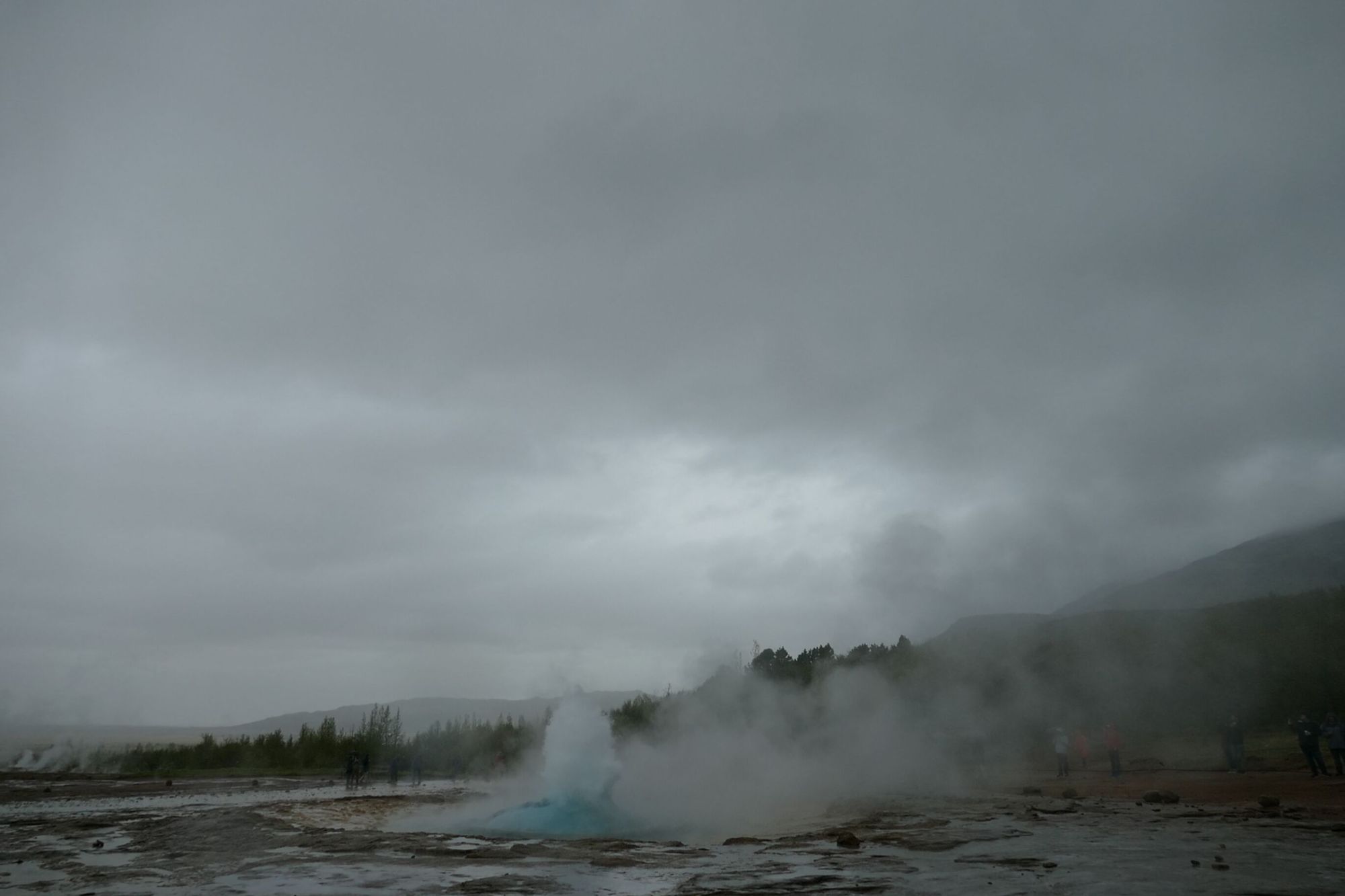
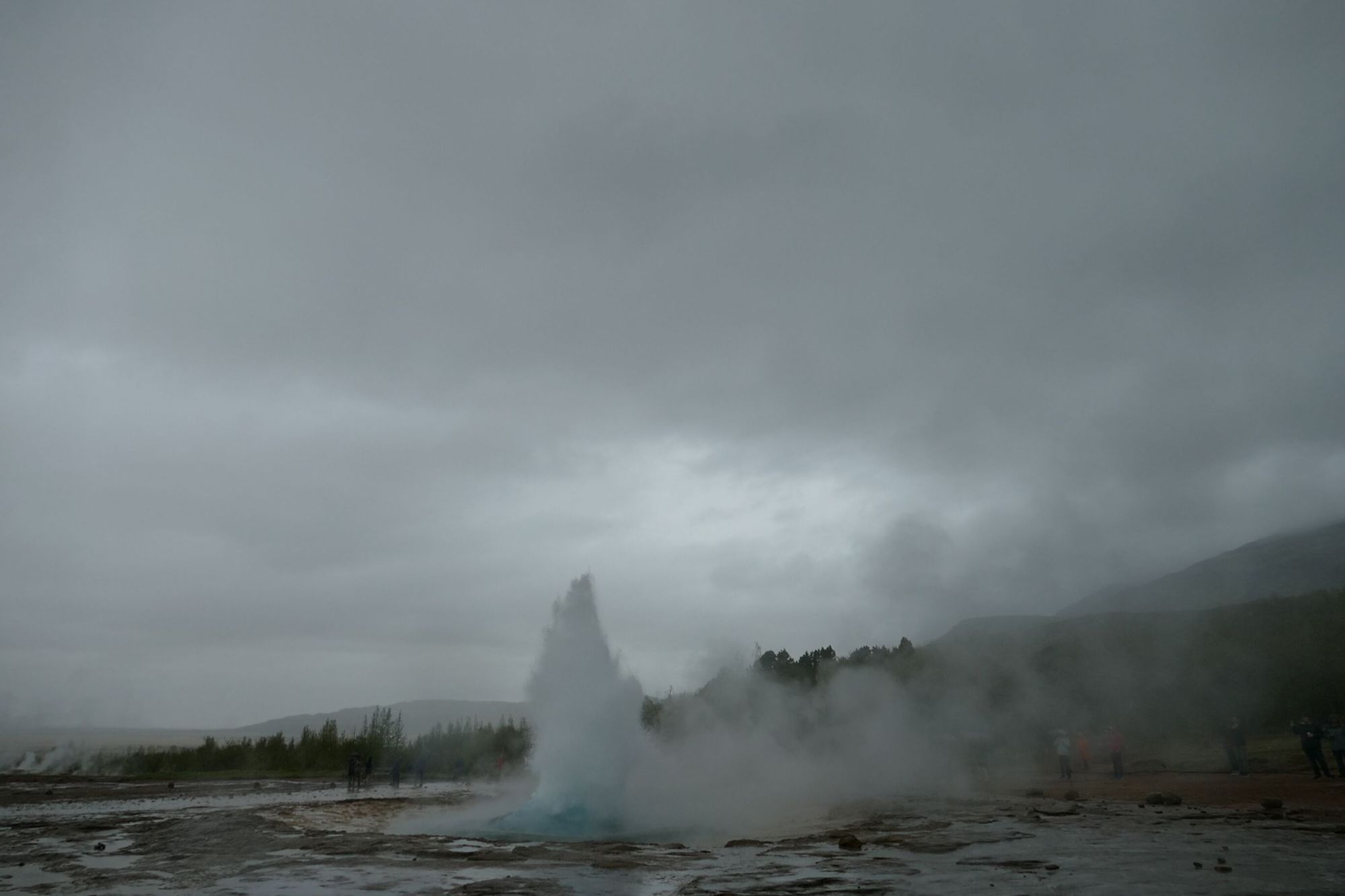
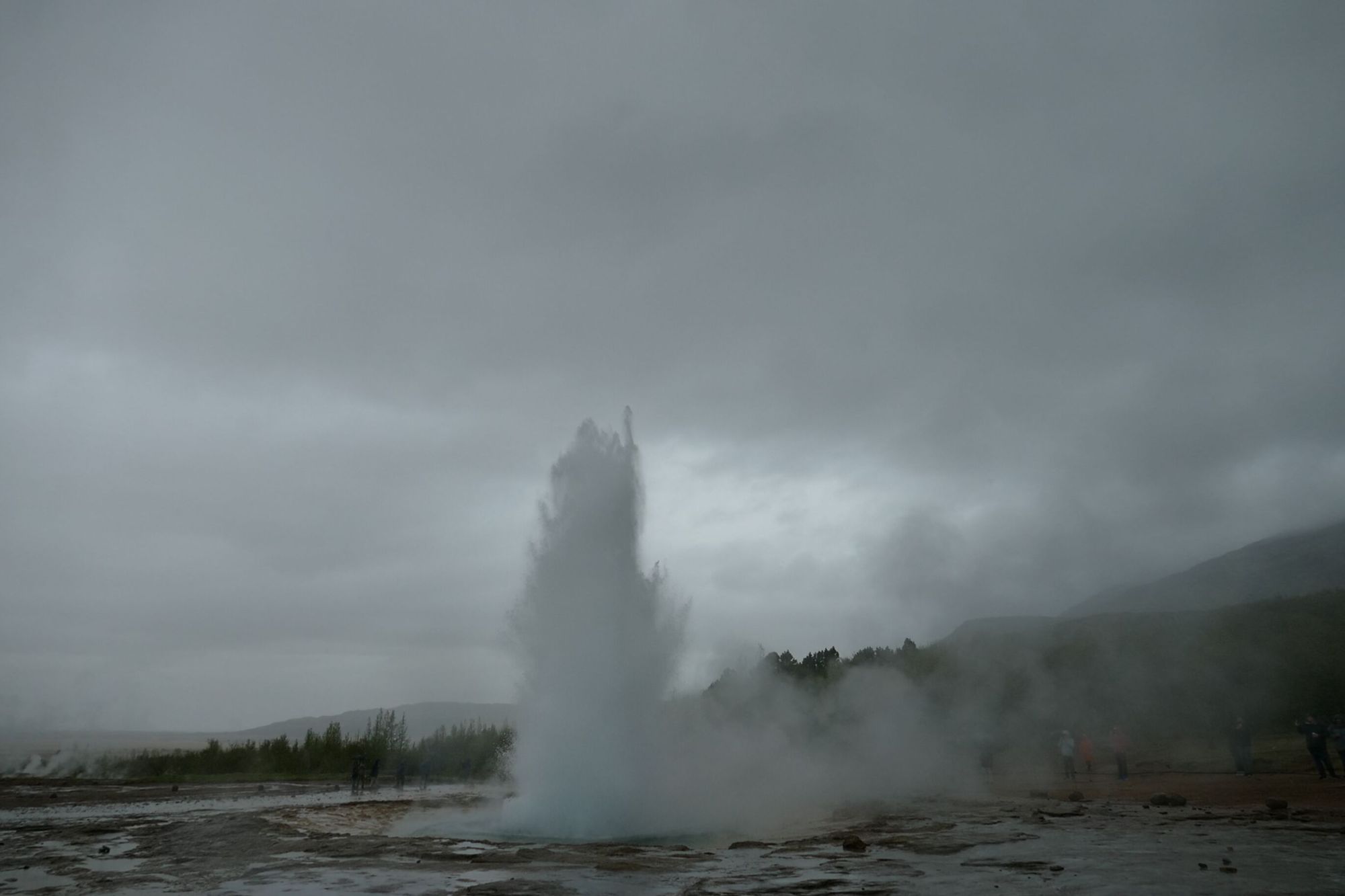
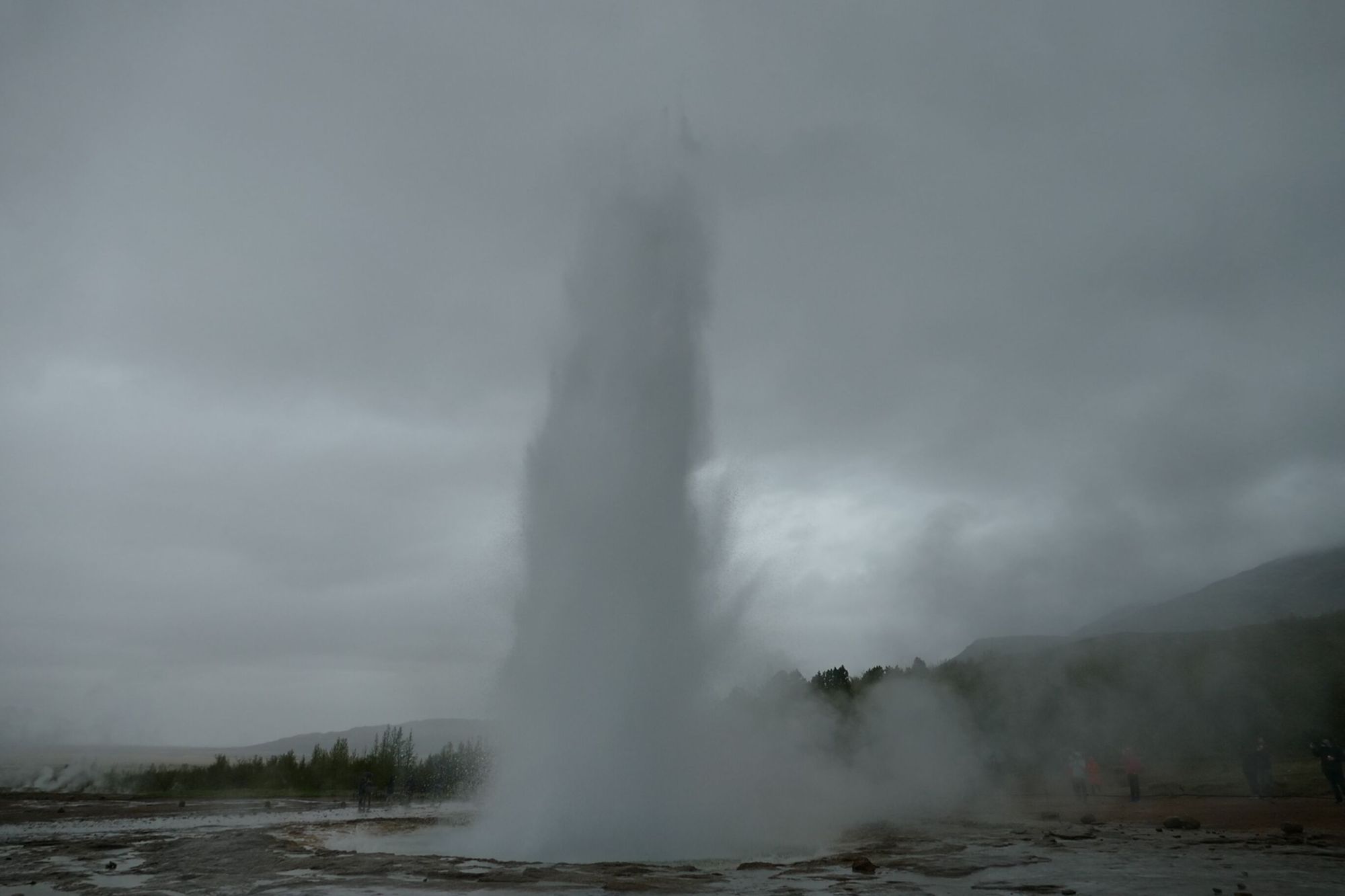
Around Geysir and Strokkur are more hot water springs, steaming and bubbling so there is also quite a sulfur aroma in the area.
The last stop for the day was the big daddy of Iceland's waterfalls (I swear, just one or two more and I will shut up about waterfalls), Gullfoss.
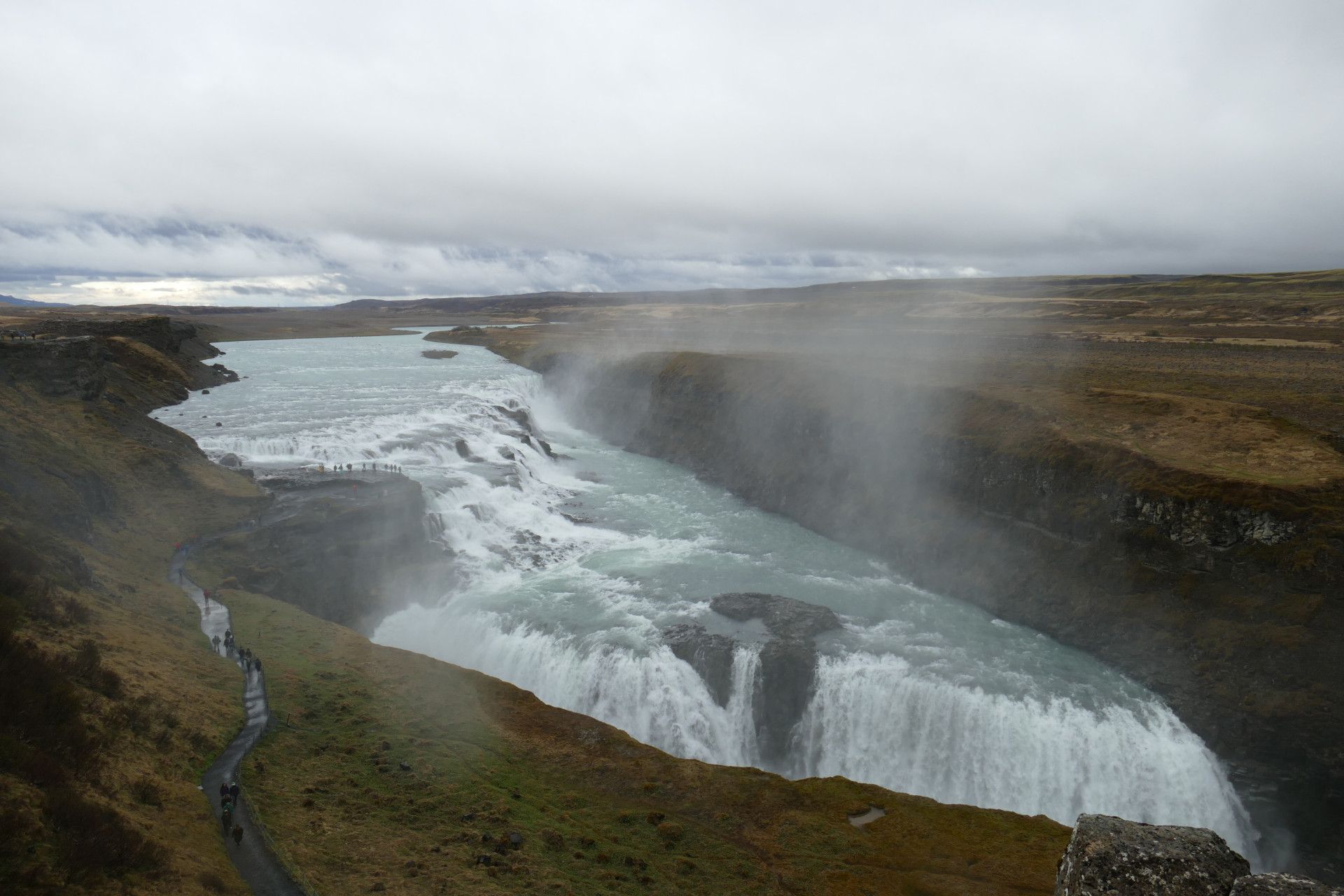
The waterfall is devided into an upper part with a height difference of 11 meters and a lower part with a height difference of 20 meters. At 140 cubic meters per second of waterflow on average it's a bit behind Dettifoss but during thawing and melting time, the waterflow can increase to a massive 2000 cubic meters per second (or to quote the info board on another useless comparison "... at peak flow, this volume can fill 60 shipping containers per second").
At the beginning of the 20th century, there have been plans to replace the waterfall with a powerplant and for a time, it looked like this plan would go through but in the late 1920s Gullfoss was saved by unpaid bills (the company behind the project didn't pay the lease for the land), so the contracts were voided. In 1979 the waterfall designated as a natural landmark and since then is protected from similar shenanigans.